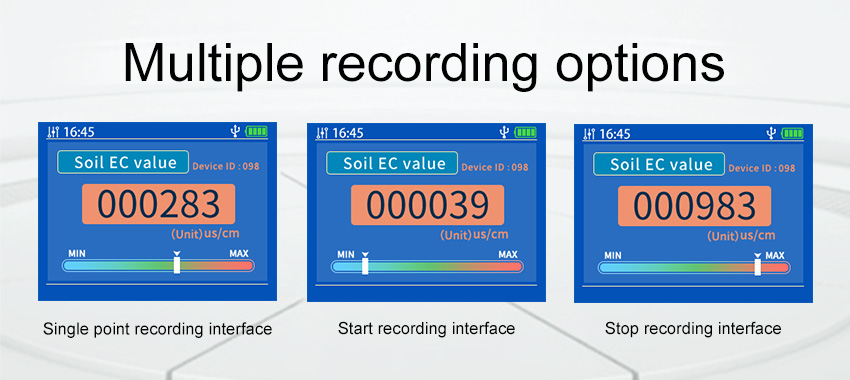Agriculture is essential for sustaining our growing global population, but it faces numerous challenges such as resource scarcity, environmental concerns, and the need for increased productivity. Soil sensors have emerged as a groundbreaking technology that revolutionizes agriculture by providing real-time data on soil conditions. This article explores the significance of soil sensors in modern agriculture and how they enable farmers to make informed decisions for sustainable and efficient farming practices.

Understanding Soil Sensors:
Soil sensors are advanced devices that measure various parameters in the soil, including moisture content, temperature, pH levels, nutrient levels, and salinity. These sensors are either inserted into the ground or installed at specific depths to collect data at different soil layers. By continuously monitoring the soil, farmers gain valuable insights into its health and can optimize their farming practices accordingly.
Optimizing Irrigation Management:
Water scarcity is a significant challenge in agriculture, making efficient irrigation management crucial. Soil sensors play a vital role in precision irrigation by providing real-time data on soil moisture levels. Farmers can use this information to determine when and how much water to apply, preventing over- or under-irrigation. By optimizing irrigation practices, farmers can conserve water resources, minimize water waste, and improve crop yields.
Enhancing Nutrient Management:
Proper nutrient management is essential for plant growth and productivity. Soil sensors offer accurate and timely data on nutrient levels in the soil, allowing farmers to make informed decisions regarding fertilizer application. By precisely supplying the necessary nutrients, farmers can reduce fertilizer usage, minimize environmental pollution, and optimize crop nutrition, leading to healthier plants and higher yields.
Detecting Soil Variability:
Soil composition and characteristics can vary significantly within a field. Soil sensors help identify these variations by measuring parameters like pH levels, nutrient distribution, and moisture content at different locations. By mapping soil variability, farmers can implement site-specific management strategies. This enables targeted interventions such as variable rate fertilizer application, seeding density adjustments, or specific irrigation scheduling, maximizing crop performance across the field.

Monitoring Soil Health:
Soil health is a critical aspect of sustainable agriculture. Soil sensors provide valuable insights into soil conditions, allowing farmers to assess soil health parameters such as organic matter content and nutrient availability. By continuously monitoring soil health, farmers can identify potential issues like soil erosion, compaction, or degradation. With this knowledge, they can implement soil conservation practices, choose appropriate crops, or apply necessary amendments to maintain long-term soil fertility and productivity.
Weather and Climate Adaptation:
Weather and climatic conditions significantly impact agricultural outcomes. Soil sensors, combined with weather data, enable farmers to make informed decisions to adapt to changing conditions. For example, during periods of heavy rainfall, soil sensors help prevent waterlogging by indicating excessive soil moisture levels. Similarly, in drought conditions, soil sensors can guide farmers in adjusting irrigation practices to conserve water resources.
Integration with Precision Agriculture Technologies:
Soil sensors are a vital component of precision agriculture systems. When integrated with other technologies like satellite imagery, drones, or GPS, soil sensor data becomes part of a comprehensive decision support system. This integration allows for precise spatial information mapping, enabling farmers to implement site-specific actions and optimize resource allocation. By using data-driven approaches, farmers can reduce costs, minimize environmental impact, and increase overall efficiency.
Supporting Sustainable Farming Practices:
The use of soil sensors promotes sustainable farming practices by optimizing resource utilization and reducing environmental impact. By precisely managing irrigation, fertilization, and other inputs based on real-time soil data, farmers can minimize nutrient runoff, reduce chemical usage, and conserve water. As a result, they can achieve higher crop yields while preserving natural resources and protecting the environment for future generations.
Conclusion:
Soil sensors have revolutionized agriculture by providing farmers with crucial data on soil conditions. Through optimized irrigation management, enhanced nutrient management, detection of soil variability, monitoring soil health, weather adaptation, and integration with precision agriculture technologies, soil sensors enable farmers to make informed decisions for sustainable and efficient farming practices. As we strive to meet the challenges of
